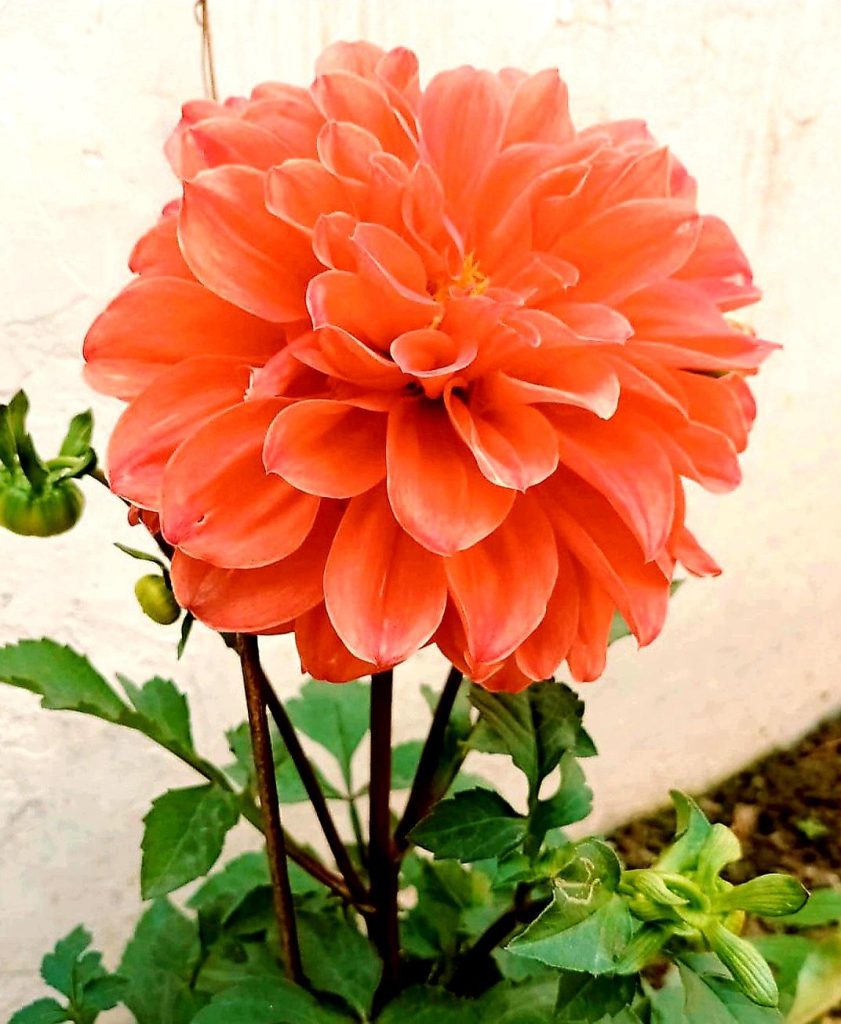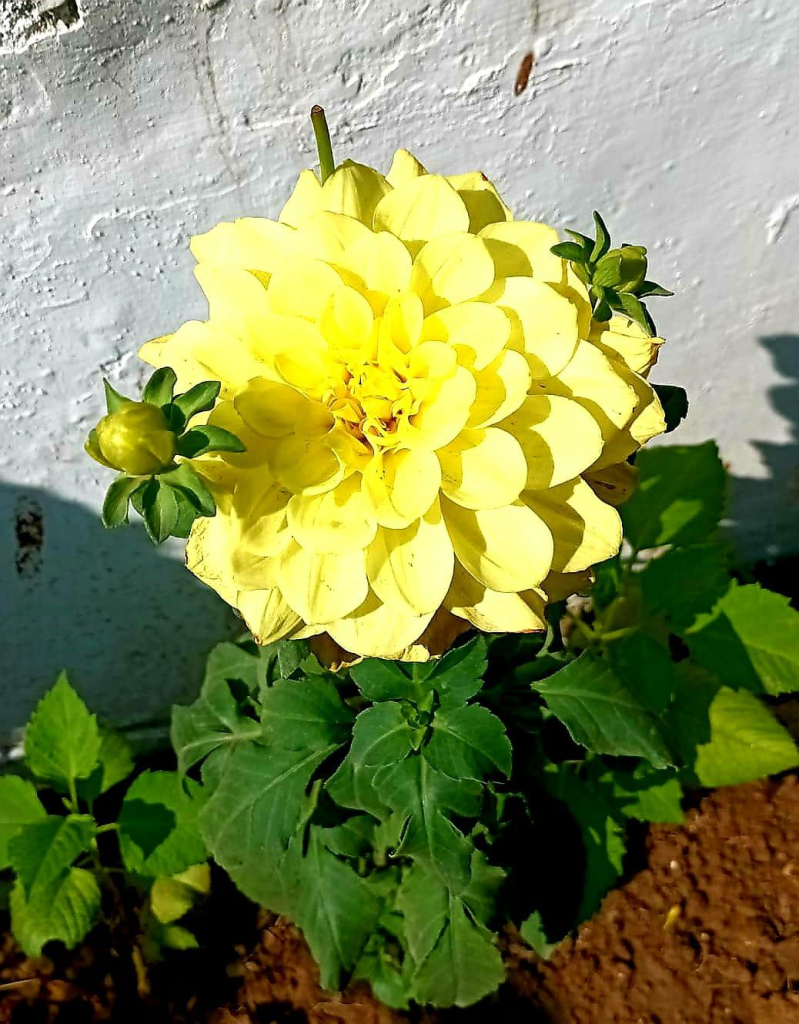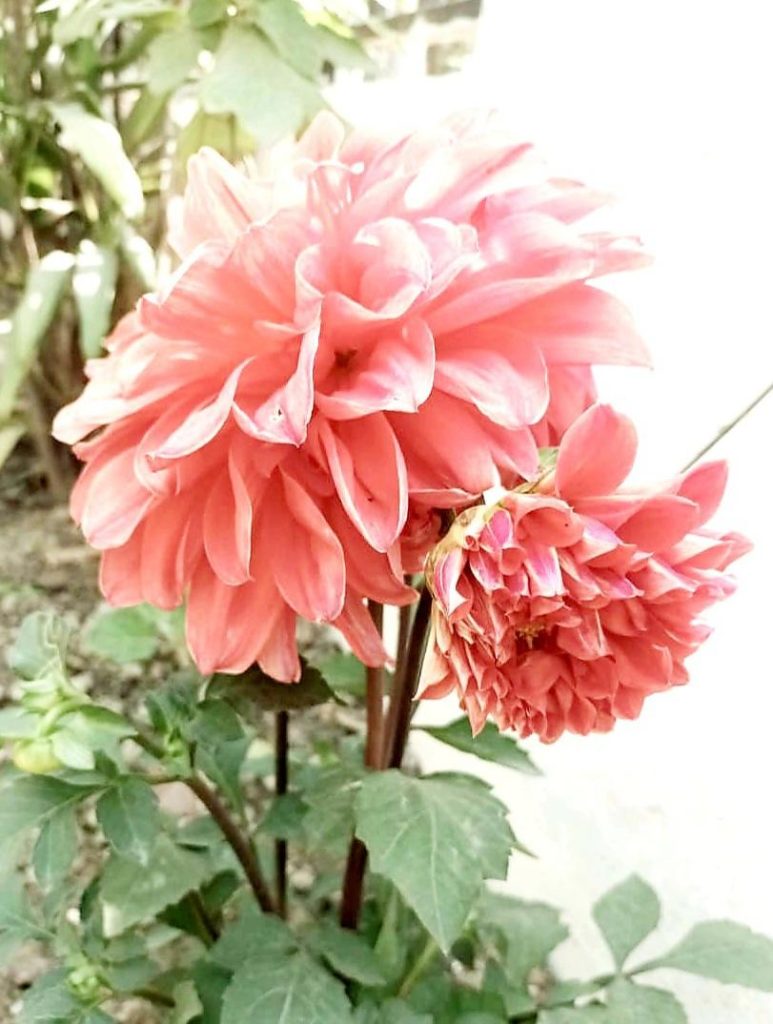Friends and acquaintances are also aware about this author’s love and fascination for flowers, and more particularly the Dahlia flowers. While in the government service for the long years, he had ample opportunity and ideal conditions to grow a variety of Dahlia flowering plants along with other flowers year after year in his very often sprawling and well-maintained bungalows. Following the retirement and after shifting to a rather small-sized villa for a detached and peaceful living at Lucknow, he still continues his rendezvous with the seasonal flowering plants, specially much desired the winter Dahlias albeit now with the constraints of the availability of space other limitations.
This year, the winter months of December 2023 and January 2024 have been rather very cold and harsh for the humans in the North India as well as for most of the flowering plants too, even beginning February too not very conducive owing to foggy weather and intermittent rains. Despite constraints, some of Dahlia plants have survived and now giving bright and beautiful flowers, some of which are being shared here along with some basic facts to make it easier for the readers to cherish and enjoy.
Historically, it is believed to have origin in Mexico and the parts of Central America from where it was brought to Europe during the 18th century and, subsequently, spread to various parts of the world, including India. According to the information available, Dahlia was introduced to India for the first time by a Swedish Botanist Doll in 1789. Although the flowering plant is grown and reared in almost entire length and breadth of the country, Kodagu district in Karnataka is particularly famous for the Dahlia flowers.

Dahlia is generally a bushy, tuberous and herbaceous plant which occurs in umpteen varieties (species) of the colourful hue. Though they grow perennially in some parts but more commonly during winter months of January to April in India. Their roots are usually tuberous while the stem is herbaceous although in some cases it lignifies and resprouts following the winter dormancy with more seasons of growth. Their stems are commonly leafy attaining a maximum height from one foot to six, or even a maximum of eight feet in some cases. Depending upon the species to species, flowers could be as small as five centimetres (2 inches) in diameter to as large as thirty centimetres (12 inches or a foot) with multiple layers of floral arrangement. While the flowers occur in a variety of colours but they conspicuously lack scent. Therefore, the pollinating insects (mostly bees and small beetles) are attracted towards them only due to their bright colours.
For the interest of the Botanists and plant lovers, Dahlia belongs to a broad spectrum of Angiosperms under the Order of Asterales and Family Asteraceae aka Compositae (original/old nomenclature) with generic name Dahlia. It has about thirty species (based on chromosomal count, field studies and observation of various attributes) distributed over the globe; Dahlia pinnata and Dahlia coccinea being more common across the Indian subcontinent, the former being preferred more by the plant growers and lovers for its variety, size, colour and ambience. Here are a few from the author’s mini garden blossoming on date:





Dahlias are very popular among the Indian gardens and masses owing to their gorgeous appearance in multiple colours, forms and sizes. Many householders frequently use them for the indoor decorations too. Notably, some people use them as popular wedding flowers, not merely for their look and grandeur but also for their symbolic meaning. Reportedly, they have been treated as symbol of an everlasting commitment and union since Victorian age among the British people, for their attributes like longevity, inner strength, creativity and elegance.




For the seasonal plant growers among the common Indian households, probably elsewhere too, Dahlias are among few most sought-after garden plants of absolute delight for their long flowering, lush green foliage and great array of shapes, sizes and colours; and, needless to mention, for their easy to grow and care for. Their infinite range of hues encompasses almost creamy white to shades of pink, bright yellow to majestic purple, bright cherry to crimson red, and in between multiple shades including even almost black.




However, the author has not come across a blue Dahlia flower so far; apparently, it occurs in almost all popular colours sans blue. According to a report, during the nineteenth century, a London based newspaper had offered £1 reward to the first plant breeder to create a blue dahlia but the reward was never claimed. Apparently, several attempts have been made by the Botanists and plant lovers leading to a near blue but never really a true blue flower.
The information may be interesting for the Indian Dahlia growers that a small European country Holland is among the significant exporters of Dahlia tubers at economic scale. According to a report, this country sells over fifty million Dahlia tubers in the international market. The kind of enormity of scale of breeding and growing, with the expertise available, India indeed has a potential to produce and export an equal or even more quantity of economically viable Dahlia annually considering its climatic suitability and other indigenous conditions.
Images (c) Jaipal Singh
18,457 total views, 18 views today














No Comments
Leave a comment Cancel